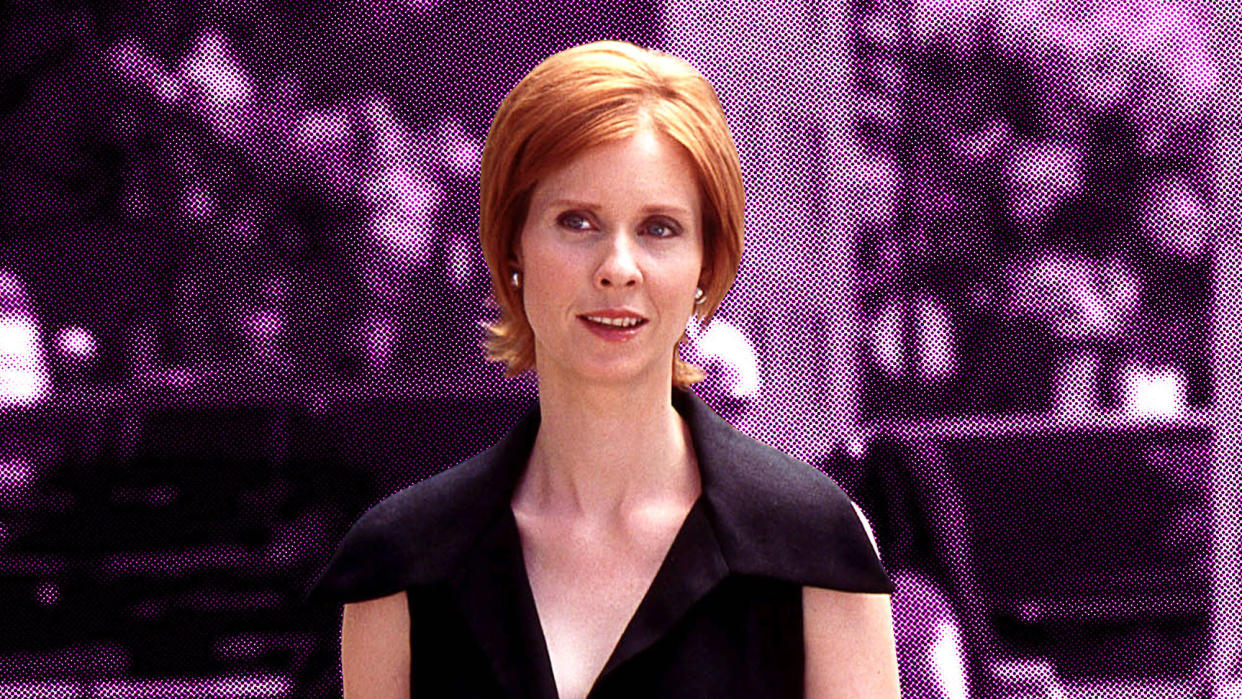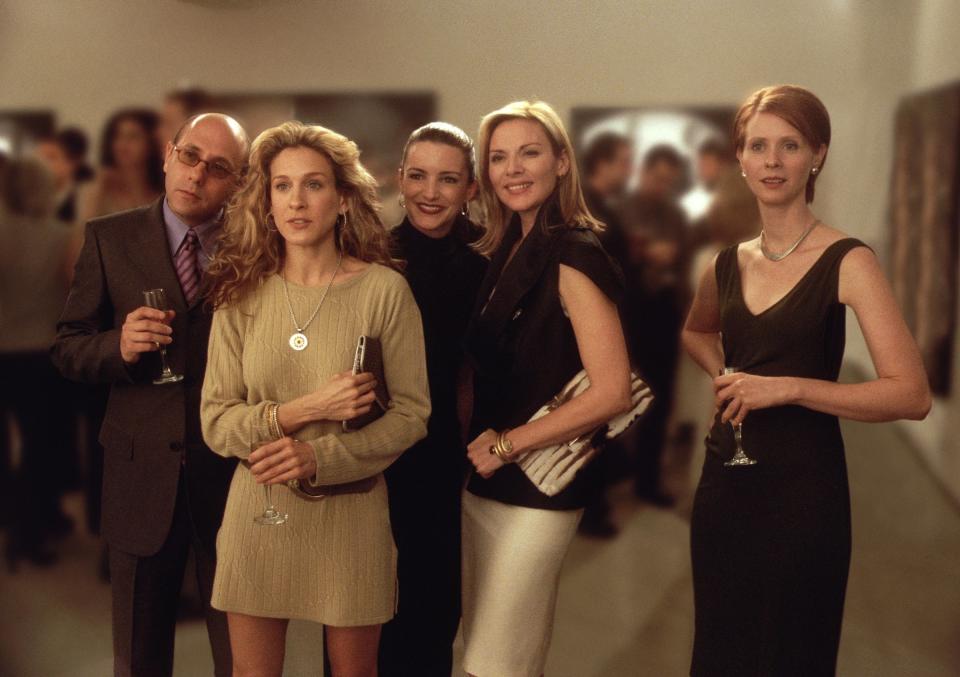Opinion: We're All Mirandas Now

Growing up watching “Sex and the City,” every foursome of friends would imagine which character they each were: a Carrie, a Samantha, a Charlotte or a Miranda?
Miranda was always the last choice. Miranda Hobbes, Esq., wore funny hats, was a feminist killjoy and rejected much of the glitz and glamour the show would increasingly become known for.
In the idealism of youth, we all liked to think we were a Carrie, breezing through life one cosmo at a time on a one-column-a-week freelancer’s salary that somehow afforded us designer shoes and a spacious studio apartment on the Upper East Side.
But younger viewers grew up and realized that Carrie was often childish and selfish, Samantha was a sex-crazed caricature, and Charlotte was the kind of person who might have voted for Donald Trump. In the 20 years since the show first aired, viewers have gotten older, wiser and a bit more cynical about sex and dating and forging a career path in a male-dominated society. It’s Miranda’s practical adulthood and female ambition that have made her an enduring character they can relate to.
“I think she really embodies the reality of the ‘women can have it all’ mantra of the show, demonstrating that having it all wasn’t all it’s cracked up to be,” London journalist Lucinda Borrell told me. In the first of the movie spinoffs, we see Miranda with her high-powered career, family, house and live-in nanny/housekeeper. But she works late, is exhausted and her marriage suffers as a result.
Miranda was the first one to buy her own home and, later in the show’s trajectory, come to terms with Manhattan’s unlivability by moving to Brooklyn in the final season, much to her friends’ chagrin. Since 1994, single women have also contributed to home ownership growth by one-third. And the median first-time homebuyer is a millennial, a generation whose members look to the women of “Sex and the City” for examples of success.
One millennial writer, Ko Im, spoke to me about how watching the excessive materialism on the show influenced her to turn around her Carrie-esque spending habits and make a deposit on a studio in Manhattan’s Tudor City neighborhood ― a move much more in line with Miranda’s sensibilities.
Miranda weighed her home purchase with the same left-brain thought process she used when listing and contacting her sex partners about having contracted chlamydia. She’s sex- and body-positive; the nonchalant way she thanks Steve for their one-night stand or the way she tells her friends about her lazy ovary has given young women the tools to speak similarly about what’s going on with their bodies and in their relationships.
To be sure, Miranda’s not afraid to tell her friends when she feels they’re too preoccupied with men and dating. Though “Sex and the City” rarely touched on the sexual harassment and assault that has come to light as part of the #MeToo movement, we can certainly imagine Miranda taking such cases to court and calling out mistreatment like she called out the “sandwich” who harassed her on the street.
Far from perfect, Miranda can sometimes be a snob, set in her ways and unforgiving, as we see in the first movie when Steve cheats on her. Even in her worst moments, such as eating chocolate cake out of the trash or being preoccupied by what her Chinese delivery person thinks of her, Miranda is the most relatable.
If “Sex and the City” were airing today, it wouldn’t be hard to imagine Miranda at the forefront of women living life shamelessly and unapologetically. I could see her embracing the makeup-free movement or #FreetheNipple, or ditching her heels at a big event like Kristen Stewart recently did on the Cannes red carpet.
Jennifer Keishin Armstrong, author of the forthcoming book Sex and the City and Us, is pleased that Miranda is being idolized 20 years after the show’s premiere. “I used to say that we want to be Carries when we’re younger and Mirandas when we become real grown-ups, but I am heartened to see so many young women identifying with her now. It’s now cool to be the smart, ambitious, sensible, feminist one.”
This is not to say that the other “Sex and The City” women were deplorable or didn’t have value. Real women are as complex and multidimensional as the show’s cast, often encompassing Carrie’s romanticism, Samantha’s fearless attitude and Charlotte’s taste.
But Miranda always stood out, not just from her friends but from other characters in media at the time. She wasn’t easygoing, she prioritized her career over finding love and having a family, and she wasn’t, by some accounts, traditionally attractive. But this is what made her real and relatable. As Keishin Armstrong puts it, “We all understand career ambition so much more now, and we value intelligence above all else.”

While Miranda was often the most relatable one, she came from a place of privilege as a white woman with a high income and prestigious educational background, advantages that are not afforded many. In addition to the show’s dazzle, it would also become known for its glaring lack of diversity and its poor portrayal of gay characters.
Cynthia Nixon, the woman who portrayed Miranda, is running for governor of New York. Her platform focuses on income inequality, mass incarceration, immigrant and LGBTQ rights. Given that 53 percent of Nixon’s white, female peers ― and, indeed, Miranda’s ― voted for Trump, Nixon seems intent on reversing some of the stereotypes we’ve seen on “Sex and the City.”
Sonia Ossorio, president of the New York chapter of the National Organization for Women, even told New York Magazine that this is how the show should have ended: “With Miranda leaving corporate America and running for governor.”
Miranda Hobbes is a fictional character, but real-life women are following her lead and taking control of their careers, their sex lives, their style and even their government. They’re turning up at the polls in record numbers and running for office themselves. Young people and minorities are continuing their activism with things like the Women’s March, the Never Again movement and Black Lives Matter, all spearheaded by women.
I can’t help but wonder: What would the world look like if everyone wanted to be a Miranda?
Scarlett Harris is an Australian culture writer. You can read her previously published work at her website, The Scarlett Woman, and follow her on Twitter @ScarlettEHarris.
Love HuffPost? Become a founding member of HuffPost Plus today.
This article originally appeared on HuffPost.

